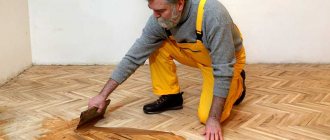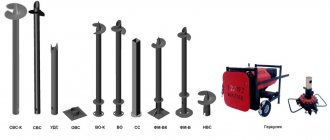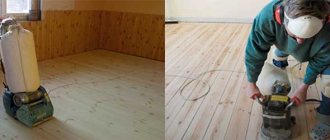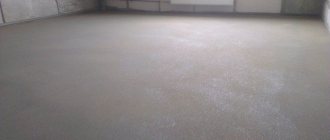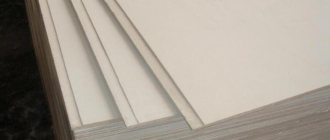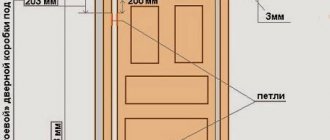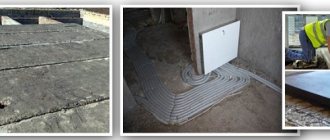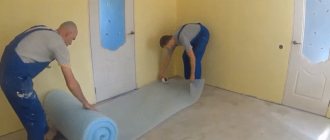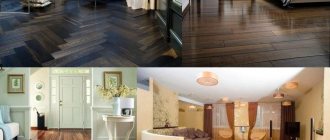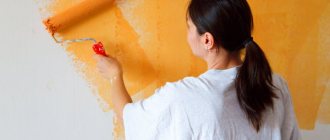Properly performed scraping of parquet, even if done with your own hands, is an effective way to restore its appearance and performance properties after many years or incorrect use. Surface scraping work is not easy, has a number of nuances, and requires certain equipment. However, it is permissible to carry them out independently, following the instructions.
To perform parquet scraping with your own hands for the first time, you need to clearly understand all the stages of the scraping process and the possible consequences of incorrect actions.
Cycling or replacing parquet is the right decision
Classic sanding of parquet floors involves removing the top layer of wood, followed by sanding and finishing with varnish mixtures. Depending on the thickness of the coating, the floor can withstand from two to eight restoration cycles. You can only work with a prepared dry coating, so before proceeding to sanding, you need to make sure that the floor:
- not dry (there are gaps between the slats, and they are small);
- did not swell;
- has no serious damage;
- was not attacked by wood-boring beetles;
- does not rot;
- has sufficient thickness for work (at least 5 mm).
The question of whether it is possible to scrape the floor with the problems noted above is answered positively only if the defects are eliminated and the damaged areas are replaced before the scraping begins.
Sometimes it is better to replace the parquet than to waste time and money on sanding boards that have already outlived their useful life
Sanding tool set
Parquet scraping can be done using a machine or manually. Using a grinding machine makes the work much easier and faster, but is a more expensive method. Such expensive equipment can be rented during repairs. If this is not suitable, then it is possible to scrape the parquet using a manual scraper.
:
It is impossible not to say that it is too difficult to work with such a cycle, your arm begins to ache from tension, and your back begins to “ache” from the uncomfortable position.
If you don’t pay attention to this, of course, you can cope with the entire surface and overcome hard-to-reach places. With this scraping method, a fairly large layer of wood material will be removed, but there is a plus: there is little dust. A hand scraper can be replaced with sandpaper attached to shoe soles. You will have to clean the parquet with your feet. It is clear that the method is not easy. It is clear why more and more preference is given to sanding machines when performing this type of work.
Sanding a parquet floor is performed in several steps, each of which uses a specific technique.
Drum parquet sanding machine
Its purpose:
- remove old varnish;
- perform rough deep sanding of wood coverings of any type.
The weak point of such a machine is that it can easily be damaged by the heads of nails or screws protruding onto the floor surface. Renting this equipment will cost from 500 to 1000 rubles per 24 hours.
Surface grinder
Designed to perform fine sanding of wood floors before varnishing, and intermediate sanding between layers when varnishing parquet. She is capable of performing jewelry work on parquet floors. The rental price is the same.
angle grinder
Designed to grind the edges of the floor covering, corners and hard-to-reach places under radiators. Renting such a car costs from 300 to 800 rubles for 24 hours.
Industrial type dust collector
provides dust removal before varnishing. Rental will cost from 300 to 800 rubles for 24 hours.
All sanding machines are expensive equipment; they are purchased by companies that perform parquet work professionally or rent out equipment. You should contact them about renting if you decide to sand the parquet yourself.
In addition to the equipment listed, you need scissors to cut sandpaper, and wrenches to secure the abrasive.
Remediation technology options: what do you need to know?
It should be noted right away that it is possible to cycle parquet better and faster only with the use of special equipment. It is possible to carry out the restoration procedure without it, manually, but this is a huge labor and time investment.
For manual scraping, you can use a special simple and accessible tool - a hand scraper. Its design implies the presence of a handle with a blade 5 cm long. The top layer of the coating is removed in cycles, simultaneously wetting it with warm water. An obvious advantage of the technology is the absence of dust and noise. The chips formed during the process do not fly away due to wetting the floor surface. In addition, anyone can afford to buy such an instrument, not to mention the more than acceptable rental conditions.
Manual scraping also has a disadvantage - the process will require more effort and time, despite the fact that the result, due to lack of experience and skills, may be far from expected.
Some craftsmen claim that scraping can be done with your own hands using an angle grinder with adjustable speed. However, this floor restoration option has its own nuances:
- working at low speeds, the tool removes too thick a layer of wood;
- working at high speeds, it requires the most precise movements, since any wrong turn will lead to damage to the coating;
- the tool must be constantly suspended, so achieving horizontality when processing the surface is extremely difficult.
A manual scraper is convenient for working in hard-to-reach areas, but processing large areas with it is long and painstaking work.
The most convenient way to restore is to use specialized scraping equipment. Productive and safe, it will significantly speed up the process and prevent damage to the floor surface. Considering its high cost, it would be more rational to enter into a lease agreement with parquet floor maintenance companies.
It is worth considering that the use of a powerful power tool for surface scraping requires compliance with certain requirements regarding the quality of electrical wiring in the room. Parquet sanding and scraping machines consume an average of 1.3 to 2.8 kW.
What equipment is used to restore the floor?
In order for dust-free parquet sanding to become a reality, it is worth choosing the right tools and equipment for independent work. The required set includes:
- drum-type parquet grinder;
- surface grinder;
- hand scraper, angle grinder for finishing hard-to-reach areas;
- industrial vacuum cleaner.
In addition, it will be necessary to prepare means to protect against chips - a respirator, overalls, construction headphones, glasses and a hat. Be sure to have sandpaper with different grit levels on hand for finishing the floor, as well as a spatula with putty, parquet varnish with a brush or roller, and a tool for dismantling baseboards or boards that require replacement.
It is necessary to have a good understanding of the equipment, strengths and weaknesses of manufacturers, so that during work the tool does not fail
Preparing the base - the initial stage
Restoring or sanding a floor, like any other type of work, involves a series of preparatory work. The area allocated for treatment must be treated with water. This must be done so that during the removal of the top layer of the floor, as little dust as possible is generated. Another interesting method to reduce the amount of dust and dirt in the process is to iron the floor covering through a damp rag.
The floor surface ready for restoration must not only be clean and moistened. Before starting work, you need to dismantle the baseboards, monitor the possible presence of nails around the perimeter of the floor (they can damage the equipment), and solve problems with creaks, chips, cracks and potholes.
The scraping of the parquet board begins from the central part of the room, gradually moving towards the walls. The treated strips should overlap each other and reach the central part of the room. During the finishing process, strips of looped parquet must move in both forward and reverse directions.
Preparing the floor, like the main part of the work, can take a fair amount of time, but it’s worth paying due attention to this process
New life for parquet - how to restore it?
If previously it was believed that sanding correctly meant removing the top layer of wood from the coating, today the use of special equipment also allows sanding the surface, thus reducing the amount of work and the time during which they are performed. After scraping and subsequent sanding, the parquet looks well-groomed and new, maintaining its aesthetic qualities for many years.
The most common types of equipment for carrying out work are drum and belt sanding machines; in some cases, surface grinding machines are also used. The floor restoration process consists of several stages:
- Rough sanding to remove the old layer of varnish and wood along with any rough edges.
- Repeated sanding of the parquet using a disc-type surface sander to remove defects and make the surface even.
- Sanding surfaces in hard-to-reach places (manually or with a sanding machine).
- Filling cracks with applying the mixture to the surface of the parquet.
- Gently sand to remove excess putty.
- Cleaning the floor from debris with a construction vacuum cleaner.
- Finishing the finished surface with a varnish mixture (several layers).
When choosing sanding tools and equipment, it is worth remembering the advantages of models with a bag for dust and sawdust. The presence of this element will greatly simplify the work, and most importantly, make it cleaner, faster and more enjoyable.
Well-chosen equipment will allow you to spend less time and effort on the work itself and on cleaning up after it.
Why do you need parquet sanding?
After several years of use, the flooring will wear out: its surface will become dull, cracks, chips, scratches will appear, individual planks will come loose, or the coating will swell. Due to such destruction, the parquet floor will begin to creak, lose its presentable appearance, and become vulnerable to external influences.
Grinding and sanding techniques are used to repair most of these damages. They are similar to each other, but have some differences. What they have in common is that the top layer of wood is cut off and then the surface is processed.
The difference is that grinding is more superficial in nature and is used for cosmetic repairs, while sanding removes a thicker layer, which requires subsequent grouting (grinding).
Attention: scraping and sanding methods are not suitable for major repairs of parquet, but only for leveling and reconstructing its surface.
Parquet repair, sanding – before and after photos
How to restore a floor manually?
High-quality scraping of old parquet, although it requires more effort and time, can be done manually. To do this, use a knife plane or a special grinder, as noted above. If it is a knife, then the blade is slightly bent and hardened with a hammer before starting work.
It’s even easier and more convenient if a special tool replaces the knife or grinder - a hand scraper with a handle made of plastic or wood. Before starting work, just as in the case of using a special tool, the floor surface is moistened with water. This little trick will not only make the process cleaner, but will also make it easier in every way. Loop the floor from the center to the wall, so that the stripes overlap each other. You can sand the finished surface using an electric polisher with sandpaper attached to the brush.
A manual scraper for parquet is not an option when you need to restore the floor quickly and efficiently with your own hands and without experience in such repairs. But with minimal experience and time, even with manual processing, you can achieve positive results, saving a decent amount on renting professional tools and the services of craftsmen.
A hand scraper is cheaper than electric equipment, but it may take some time to learn how to use it
Stage 5. Directions for scraping
When performing work using special machines, the main difficulty lies in observing the scraping directions for various options for laying parquet.
The following scraping directions are possible;
— movement across the fibers is not allowed (this condition is especially difficult to fulfill when scraping by machines);
- if the parquet is laid in a herringbone pattern, then the direction of movement at the first stage of processing is made at an angle of 45 degrees, at the second stage it should be changed to the position of movement along and across;
— parquet laid out in the shape of squares (curly) is looped in two directions at an angle of 90 degrees;
— when scraping decorative styling, circular or spiral movements are made. In this case, the beginning of the movements is made from the edges of the picture to its center.
If the parquet is laid with a complex decorative pattern, then it is better to scrape it by hand, since in this case the wood of expensive species is used, and the thickness of the tiles is very small.
When using a surface grinder to perform scraping work on decorative parquet, a long delay in one place is not recommended.
Reviews from experts confirm that only if the scraping directions are followed, high-quality work is achieved.
Grouting joints
Finishing the floor with varnish - useful tips
The final stage of scraping is surface treatment with varnish. This must be done so that the floor acquires a rich color, glossy or matte shade, and becomes presentable and updated.
High-quality scraping of parquet (video instructions will help you carry out the work correctly in the required algorithm) - a fairly clean process with virtually no dust or sawdust. However, after finishing the work, the floor will need to be vacuumed and washed with warm water several times. A clean and dry surface is considered ready for varnishing.
The color of the varnish also needs to be approached wisely; the wrong color can take away the volume from the room or create the wrong atmosphere
The floor is varnished in several stages. At the initial stage, a special primer is used to enhance the adhesive properties of the coating. After the primer layer has dried, the floor surface is treated with fine-grained sandpaper. This must be done to remove the resulting lint.
After removing dust from the floor again, apply a layer of varnish, wait for it to dry and repeat the manipulation. It is most convenient to apply the mixture with a wide roller with velor pile or a wide brush. The number of layers can be up to seven, depending on the requirements for the final result.
Recommendations and tips for those who scrape parquet themselves
Of course, inviting a specialist would be the most correct decision, but if funds do not allow or you are one hundred percent confident in your abilities, then you can listen to our advice and recommendations:
- It is easier to tidy up (scrape) old parquet with the help of professional equipment. The equipment must have a wide abrasive belt. Using a small sander is quite difficult.
- If the parquet is heavily damaged, it is better to use a 30-grit sanding belt. Sanding with a lighter-grit belt will help remove any remaining marks from rough sanding.
- Soviet-era plank floors are first leveled along the wood fibers and then processed at slight angles (from 7 to 15 degrees). According to the rules, parquet flooring is sanded diagonally in relation to the laying pattern. You need to move evenly and without jerking.
- With each new pass of the sander, the displacement should not exceed 85% of the drum width. During this type of work, the side wheel will also move along the treated surface.
- If the main machine cannot reach hard-to-reach places, then an angular disk machine is used. It helps to cope with areas of the floor near the baseboard and in the corners of the room. Sandpaper can also solve the problem.
- If after sanding there are still deep scratches on the parquet, they can be repaired with a special putty (applied in a thin layer, you can match it to the color of the wood). The putty dries in about 5 hours.
- The varnish is applied better if you use a sheep's wool roller. Immediately before applying the second coat of varnish, the floor should be thoroughly cleaned of dust. Varnishing should preferably be in 3 layers. The more layers, the more durable the coating will be. For an ideal result, after each drying, you need to go through the sandpaper again by hand.
- So, your floor is as good as new. But in order for it to remain that way for many years, it must be restored and updated in the above manner every 6–7 years. And do not forget to treat the renewed wood surface with an antiseptic as part of the restoration work.
- Author: Mikhail Malofeev
Rate this article:
- 5
- 4
- 3
- 2
- 1
(4 votes, average: 3.3 out of 5)
Share with your friends!
Cost of issue - budget calculation
Obviously, the cost of sanding old parquet depends on whether the work will be carried out independently or by calling a specialist to your home. At first glance, it may seem that the first option is more profitable in all respects. This is true, but only subject to the conditions of surface treatment, the use of proven equipment, and high-quality materials.
Lack of experience in scraping with unreasonable savings on tools, equipment and materials will lead to a negative result - the floor will require re-processing, and this is additional expense. That is why, when deciding to restore the floor yourself, you need to take into account every little detail, from the choice of primer mixture to high-quality varnish.
Before scraping parquet yourself, you need to think carefully about whether it would be cheaper to call specially trained craftsmen with high-quality, proven equipment
Particular attention should be paid to the selection of equipment for the work. Machines for scraping and grinding surfaces must be free of defects, easy to use, and prevent damage to the floor. To ensure the process goes smoothly, you should not refuse instructions from the grinding equipment rental company.
And lastly, no matter how high the price of restoration work may seem, it is not commensurate with the cost of completely replacing the old parquet with a new one. Dismantling the covering with preparing the base and laying a new floor will cost many times more, which means that the restoration process should be approached with all responsibility, without saving where this can leave a negative imprint on the result.
